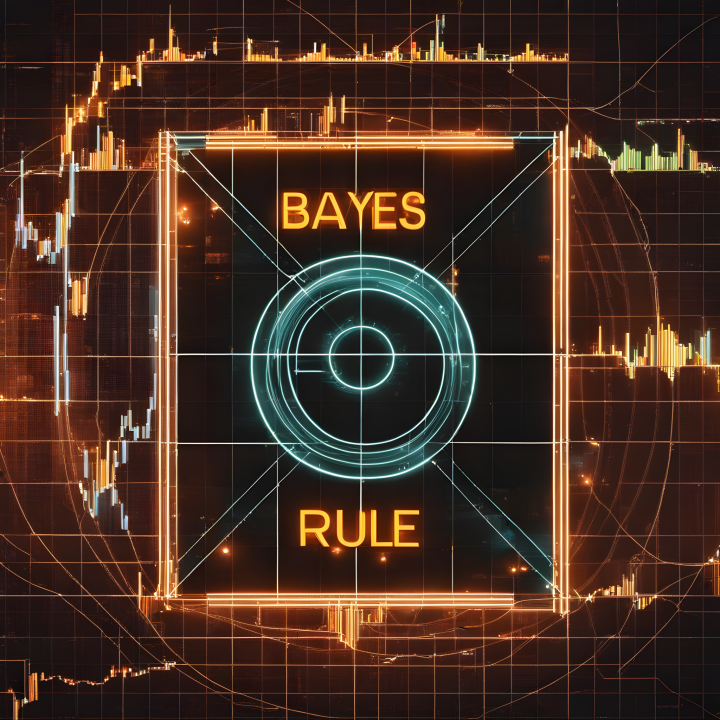Bayes Theorem in Data Science
Imagine your job search during a recession 🧩. How likely are you to find a job given the economic downturn? 📉 That's where Bayes Theorem comes in!

Bayes’ Theorem in Data Science
Bayes’ Theorem is a fundamental concept in probability theory and statistics, playing a crucial role in various fields like data science, machine learning (ML), and artificial intelligence (AI). Its importance lies in its ability to update beliefs and make predictions by incorporating new evidence or information.

Scenario
Let’s explain Bayes’ Theorem using an analogy of job hunting during a recession in the USA. The job market is tough, and you’re trying to figure out your chances of landing a job.
Understanding the Variables
Before applying Bayes’ Theorem, we need to grasp the essential variables:
- US Employment Rate: As of the latest data from Statista, the US employment rate stands at 62.2%.
- Probability of Recession in the USA: According to Statista, the probability of recession in the USA is currently 60.83%.
- Likelihood of Recession for Jobholders in the USA: Let’s assume the likelihood of being affected by a recession while having a job is 10% (Source).
Applying Bayes’ Theorem
Bayes’ Theorem provides a way to update probabilities when new evidence is available. In our analogy, the probability we want to calculate is the likelihood of securing a job during the recession, given the current recession rate.
Here’s the formula:
[ P(H|E) = {P(E|H) \ P(H)}{P(E)} ]
- ( P(H|E) ): Posterior probability - the probability of securing a job during the recession.
- ( P(E|H) ): Likelihood - the probability of a recession happening when you have a job (10%).
- ( P(H) ): Prior probability - overall probability of securing a job (62.2%).
- ( P(E) ): Probability of a recession happening (60.83%).
[ P(H|E) = {0.1 * 0.622 \ 0.6083} ]
P(H|E) = 0.1022
So, the probability of securing a job during the current recession is approximately 10.2%.
Interpreting the Result
Even in the face of a recession with a high recession rate of 60.83%, we still have a chance of around 10.2% to secure a job. This probability considers both the general employment rate and the likelihood of a recession affecting jobholders.
Significance in Data Science
Bayes’ Theorem is crucial for data scientists, analysts, and others in related fields. Here are some simple use cases to illustrate its significance:
Machine Learning and AI
In ML and AI, Bayes’ Theorem is used in various algorithms, especially in Naive Bayes classifiers. These classifiers are widely used for tasks like spam email detection and sentiment analysis.
Use Case: Classifying emails as spam or non-spam based on the occurrence of certain words in the email content.
Diagnostic Systems
Bayes’ Theorem is vital in medical diagnosis and fault detection systems. It helps calculate the probability of a disease given certain symptoms or the probability of a machine being faulty given certain observed behaviors.
Use Case: Diagnosing a patient’s illness based on symptoms and medical history.
A/B Testing and Decision Making
In marketing and business analytics, Bayes’ Theorem helps analyze the results of A/B tests, allowing businesses to make informed decisions about product features, advertisements, and user experiences.
Use Case: Determining the effectiveness of two different website layouts in terms of user engagement and conversion rates.
Natural Language Processing
In language processing tasks such as speech recognition and language translation, Bayes’ Theorem aids in predicting the next word in a sentence or understanding the meaning of a sentence given the context.
Use Case: Predicting the next word in a sentence based on the words that have appeared before in the text.
Anomaly Detection
Bayes’ Theorem is useful in detecting anomalies in various domains, such as network security, fraud detection, and quality control. It helps in identifying unusual patterns that deviate from expected behavior.
Use Case: Identifying fraudulent credit card transactions based on transaction history and spending patterns.
